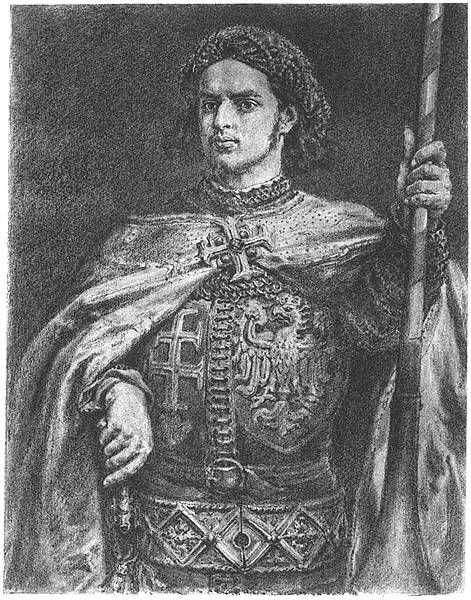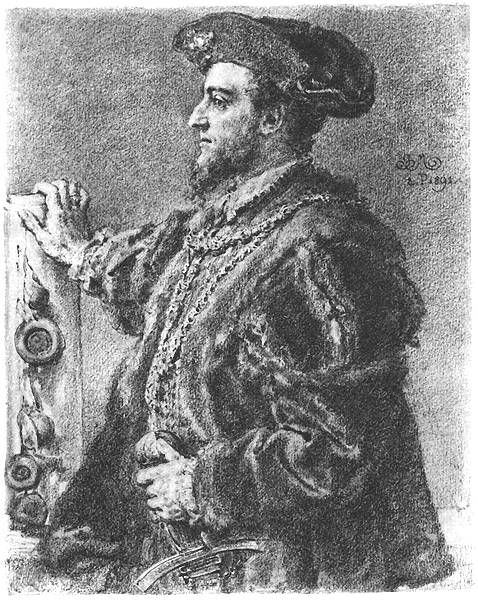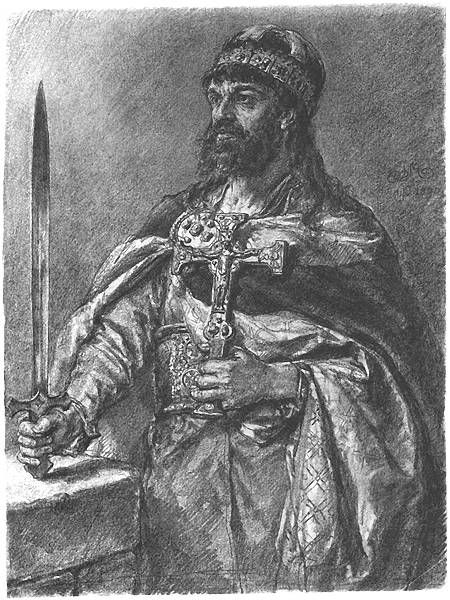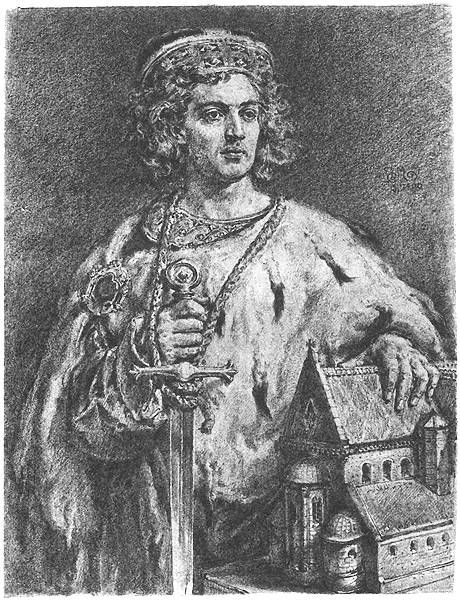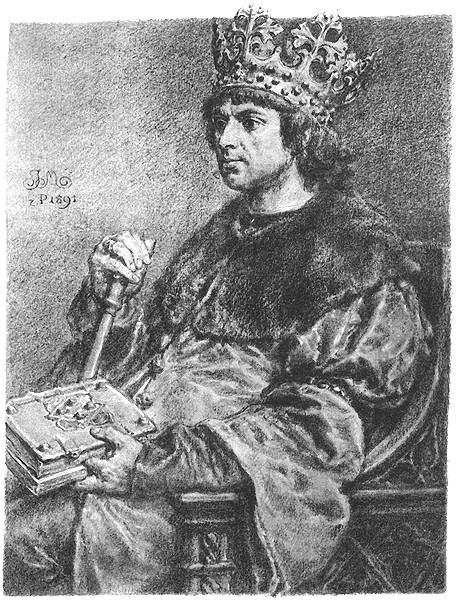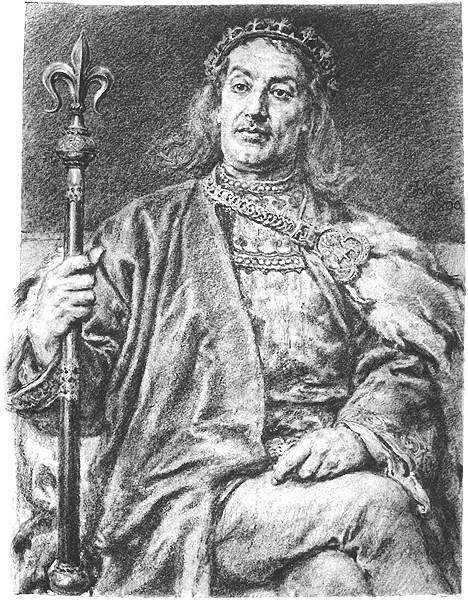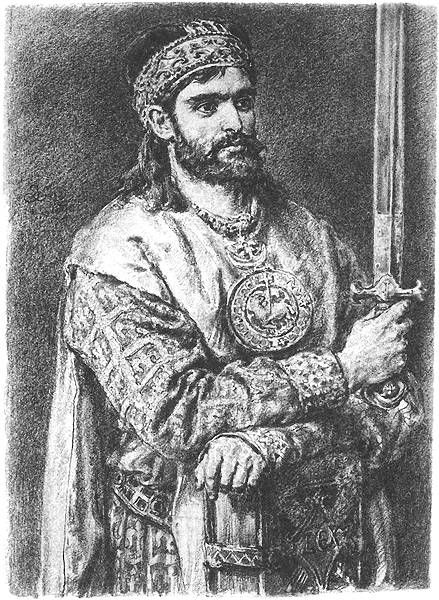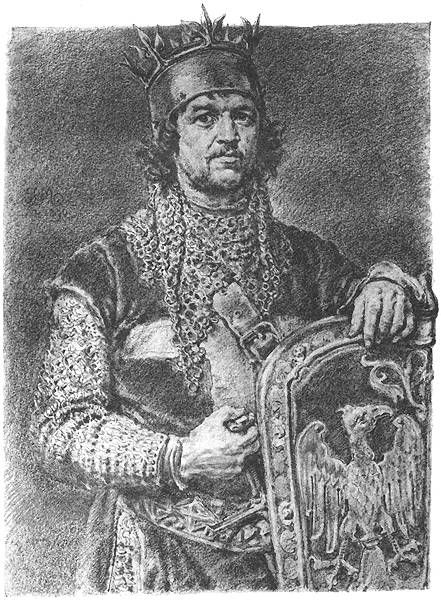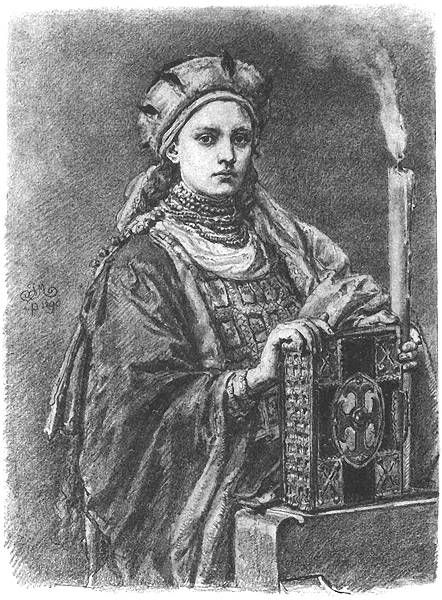
drawing, pencil, charcoal
#
portrait
#
drawing
#
charcoal drawing
#
portrait reference
#
famous-people
#
male-portraits
#
pencil drawing
#
romanticism
#
pencil
#
charcoal
#
history-painting
Copyright: Public domain
Curator: Before us is Jan Matejko’s charcoal and pencil drawing of Przemysl II. Editor: The shading is remarkable. Notice the granular textures, almost photographic in their intensity. The dramatic chiaroscuro lends an air of profound dignity and almost melancholic gravitas to the figure. Curator: This drawing is very much within Matejko's project of memorializing Polish history. Przemysl II, crowned in 1295, was the first king of Poland after a period of fragmentation, making him a figure of immense national importance in the late 19th century when Poland was again partitioned. Editor: Consider the lines that define the crown—the sharp angles suggesting power and authority and contrasting the softer lines that detail the king's face. His grip on the scepter is firm but controlled, further reinforcing that tension between might and measured rule. It seems symbolic to me, a study in contained power. Curator: Precisely. The symbols reinforce that idea. The Polish eagle emblazoned on his chest anchors him to the nation. It is not merely a portrait; it’s a constructed image intended to evoke patriotic feelings, very indicative of Romanticism of the era. Note the inscription “1890” in the upper right, marking its place in Matejko’s late period. Editor: Absolutely. His gaze averted suggests a contemplation that elevates the work beyond pure portraiture, encouraging viewers to engage with historical reflection and consider the burdens of leadership. This work evokes something profound and timeless in charcoal and pencil. Curator: Agreed. The work encapsulates the very essence of Matejko's historical vision. His legacy lies in his visual narratives of Poland’s glorious yet tragic past, using figures like Przemysl II as focal points. Editor: This image lingers long after we depart from it. Matejko successfully transforms a mere likeness into something truly iconic, an allegorical representation of sovereignty.
Comments
No comments
Be the first to comment and join the conversation on the ultimate creative platform.

